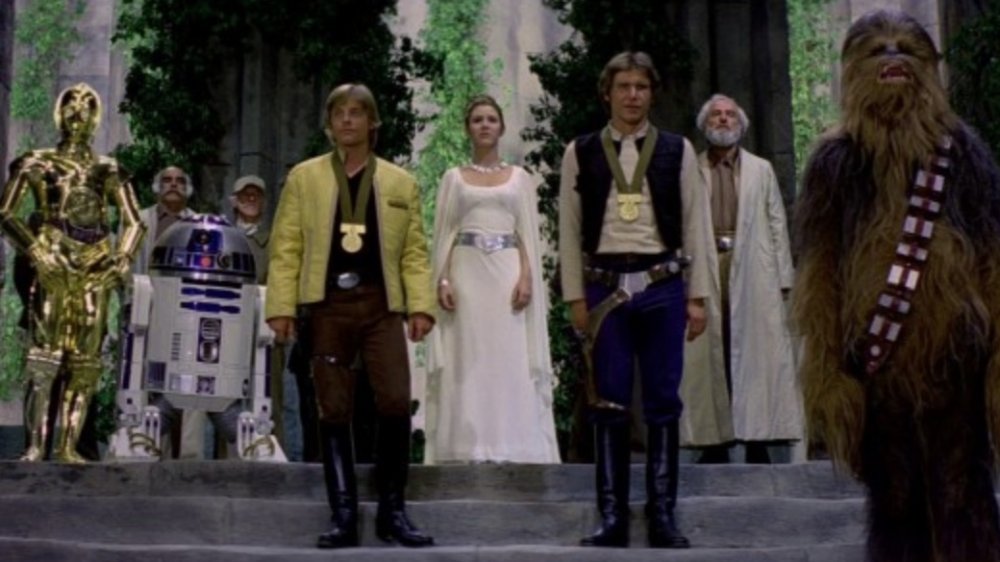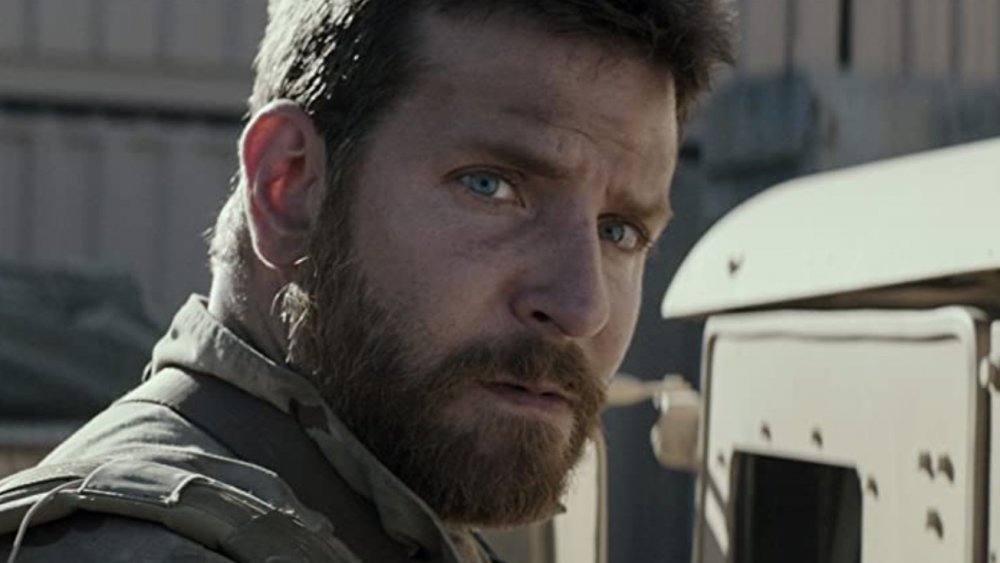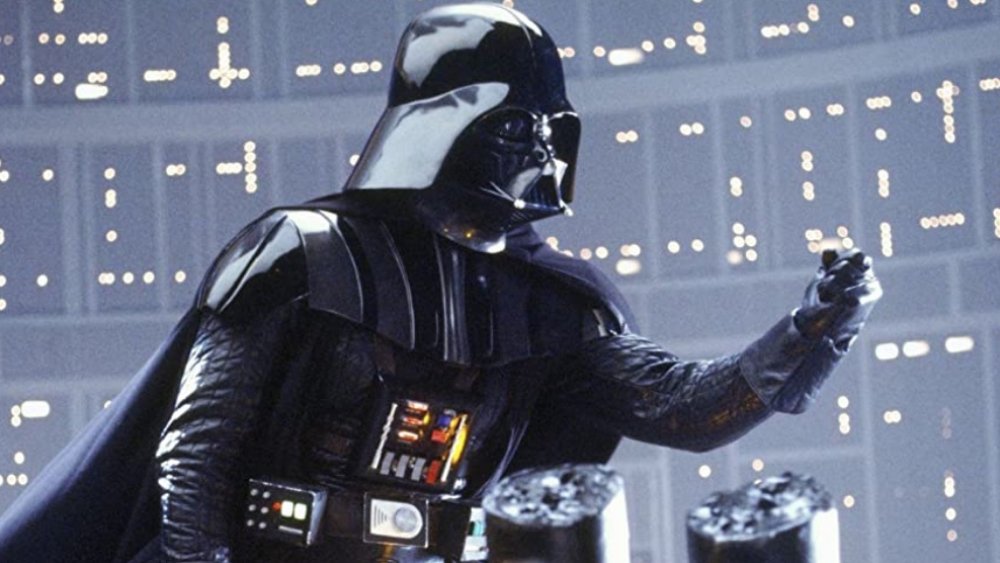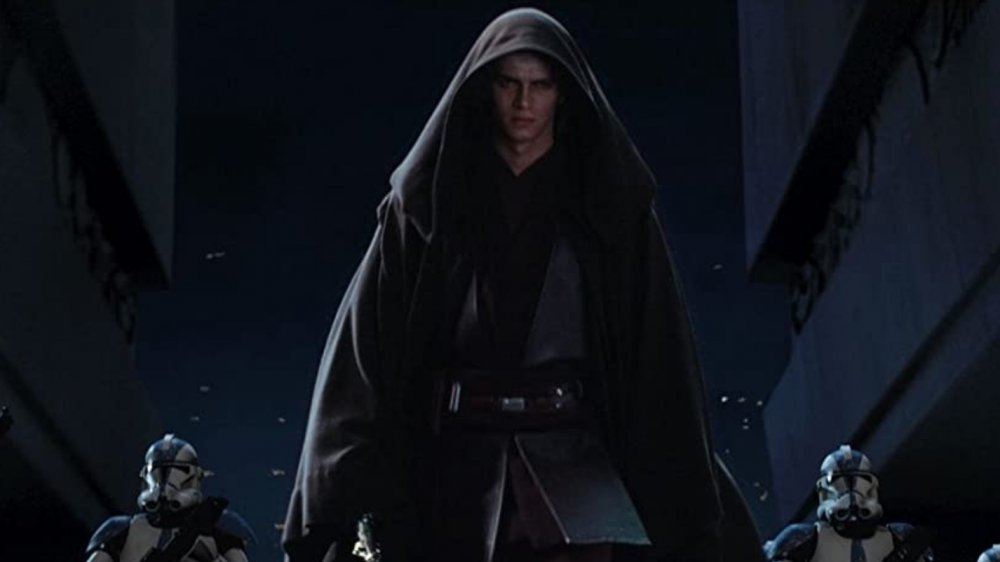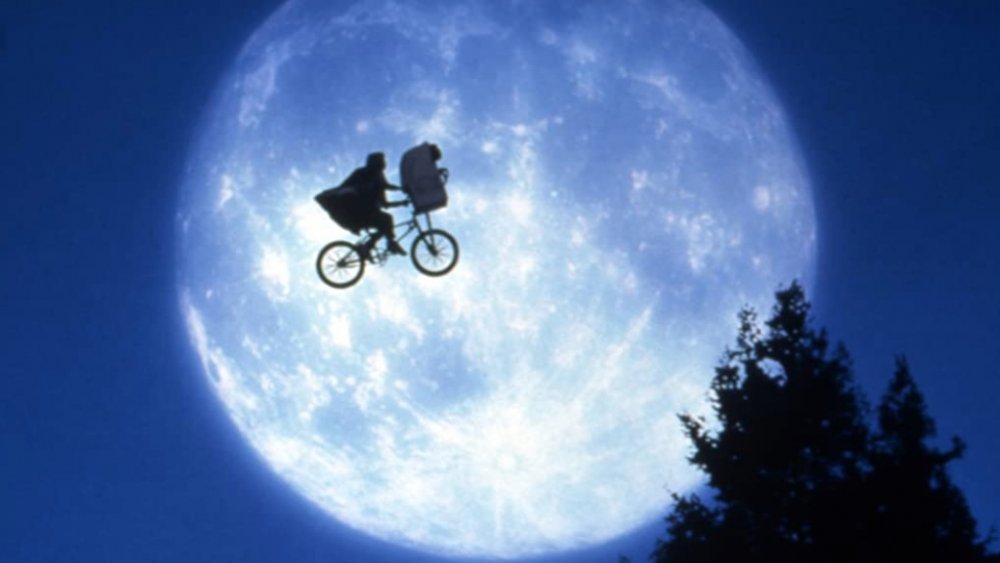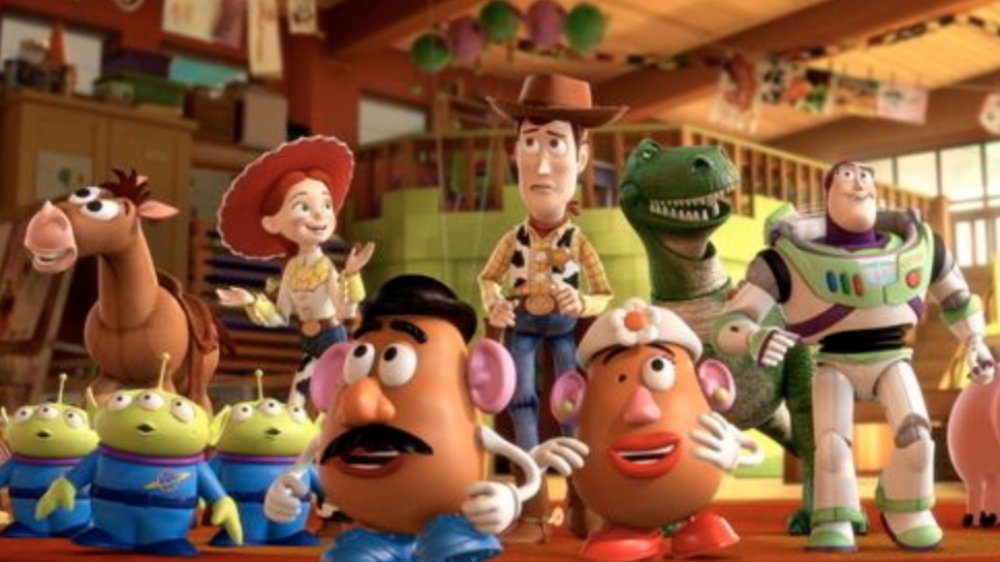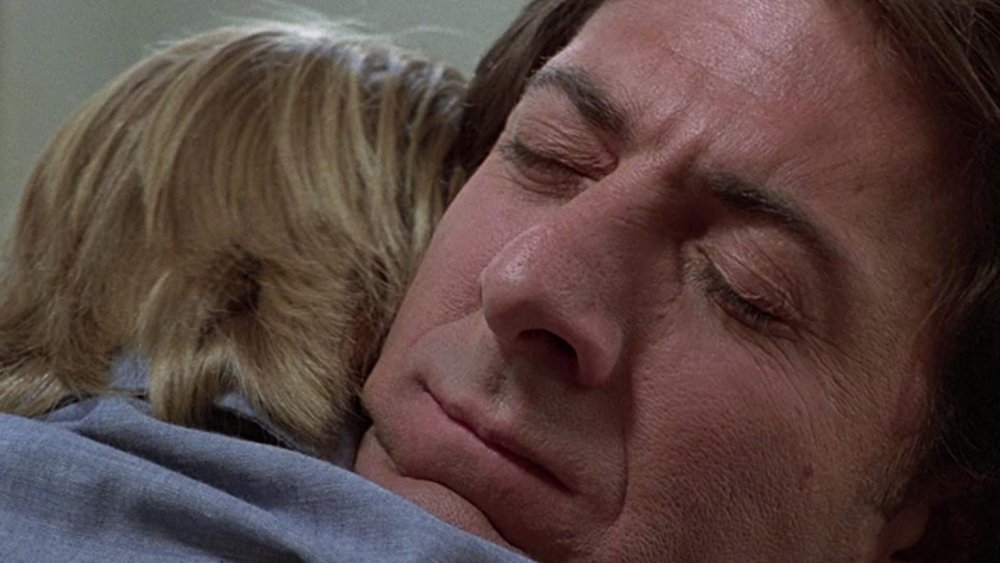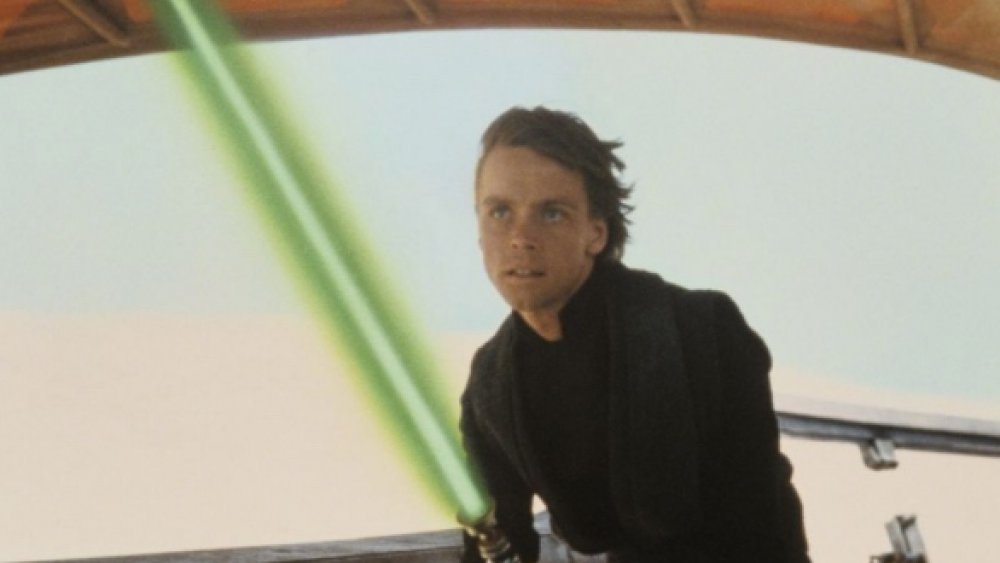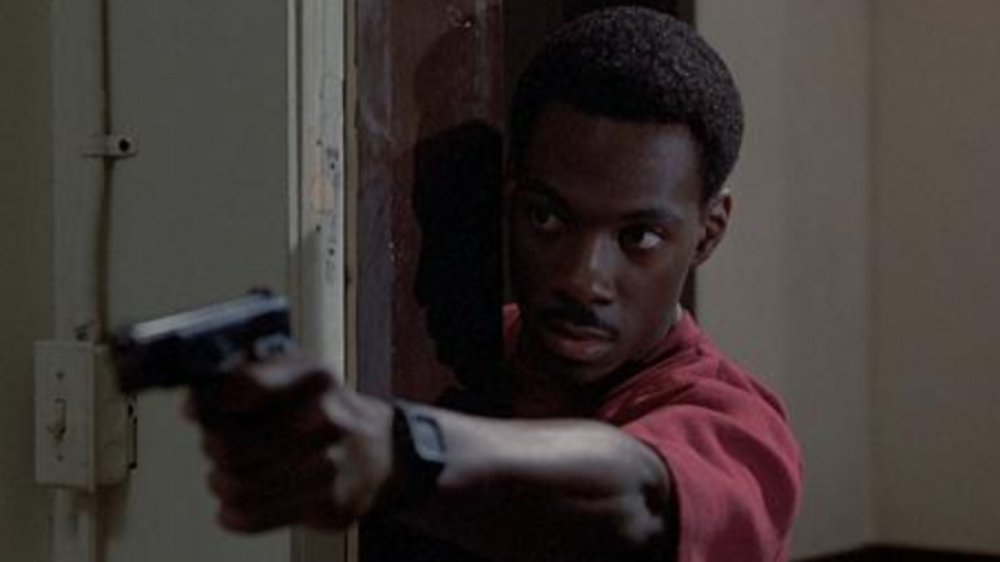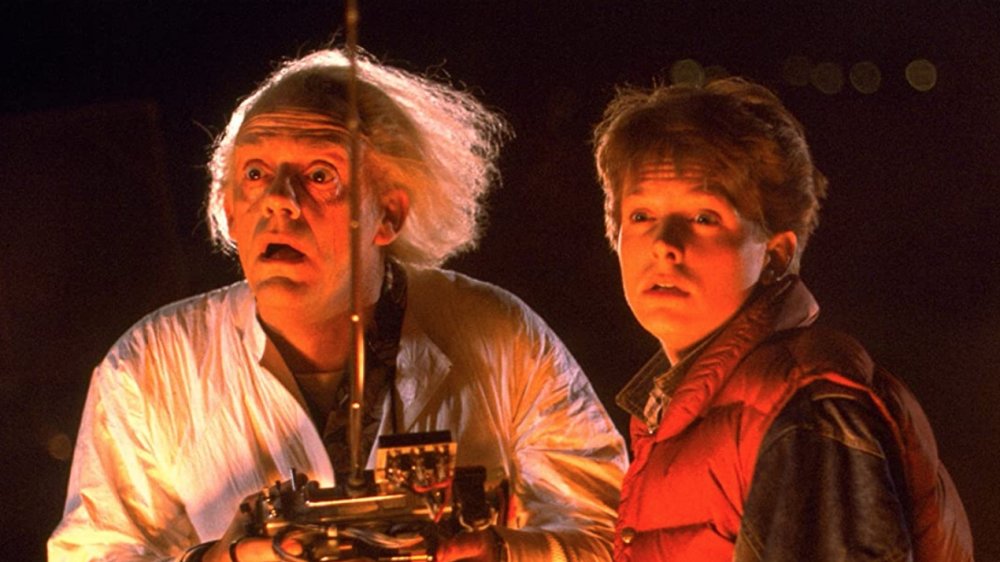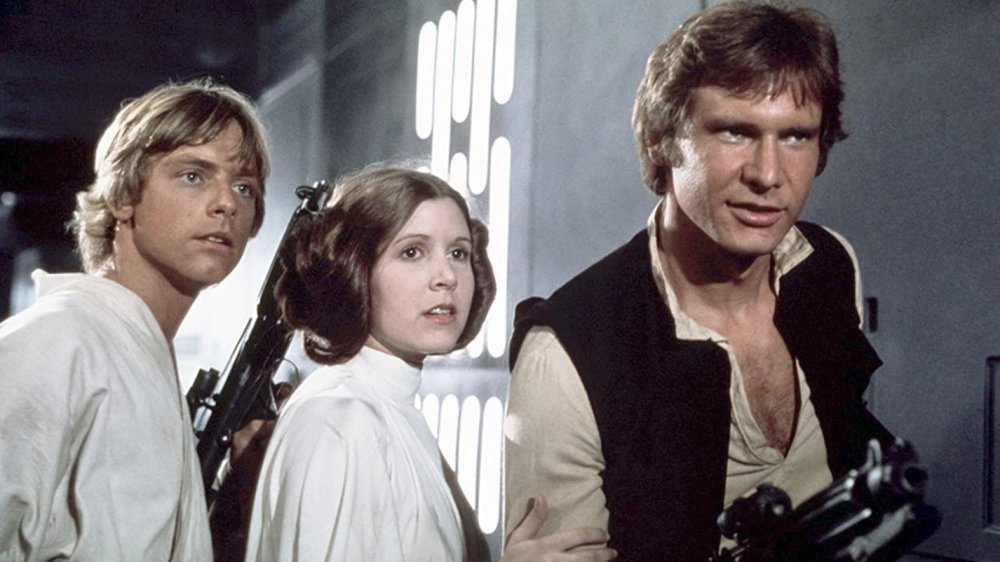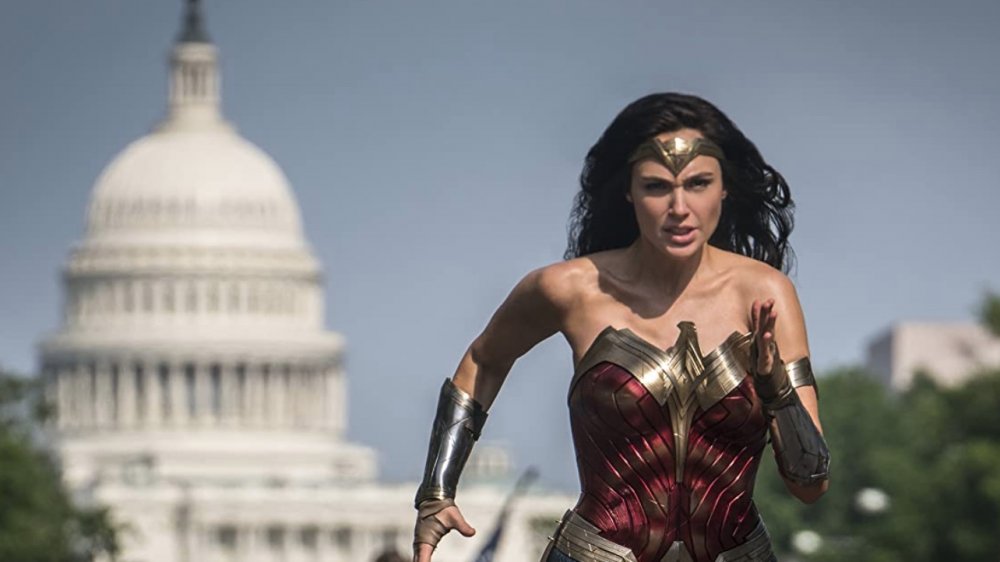The 5 Best And 5 Worst Years In Box Office History
You'd be a billionaire if you could perfectly predict the movie business. Many have tried, many have succeeded, but even the best Moneyball-style prognosticators don't get it right 100% of the time. Moviegoers are a fickle lot, and there's no telling what movies will hit — and what movies will fail. Sure, we live in the IP and Cinematic Universe era, where every film in a series must have a built-in fan base and be tied into a larger multi-film franchise. Sounds foolproof, right? Just ask Universal after they released Tom Cruise's The Mummy about that.
Movie producers try to mitigate risk when they spend hundreds of millions of dollars on a movie, and making sequels, prequels, reboots, and spin-offs to proven properties seems like a safe bet. However, while some of the biggest box office years in history were headlined by original stories, some of the worst were suffocated with sequels.
Instead of basing our list on total grosses (in which case this list would be exclusively 2010s vs. 1970s thanks to inflation) we based our "Best" and "Worst" years on the specific year's plus-or-minus percentage compared to the year before. Put simply, if the overall box office was up or down considerably from the year before, it made the list. Based on some of the big hits that came out in down years, even we were surprised by the entries on this list — and you will be, too. Here are the 5 best and 5 worst years in box office history!
Worst: American Sniper couldn't save the 2014 box office
There was a time when original, adult-skewing dramas were the year's biggest earners: Rain Man in 1988, Forrest Gump in 1994, Saving Private Ryan in 1998, and, of course, Titanic in 1997. Those days are long gone. From 2015 to 2019, the biggest domestic earners were not only sequels but came exclusively from two franchises – Star Wars and Marvel. Really, it's not even a contest at this point: Disney wins, lol! The last year to be headlined by an original drama was 2014, with American Sniper.
Perhaps not coincidentally, 2014 was also one of the worst years in box office history, down 4.7% from the previous year, when The Hunger Games: Catching Fire topped the box office. At -4.7%, 2014 is actually tied with 1991 (topped by Terminator 2: Judgment Day), but given that 1991's per-film average was $17.6 million, while 2014's average was $14.7 million, 2014 gets the dubious honor.
American Sniper topped the domestic box office with $350 million but actually came in 13th worldwide, with Transformers: Age of Extinction (despite earning a disappointing $245 million for a seventh-place domestic finish) winning the worldwide race with $1.1 billion. However, the big story that year was Guardians of the Galaxy earning $333 million domestically and $772 million worldwide (placing third domestic and worldwide), proving that Marvel could take even a D-list comic book about a talking raccoon and tree and still make it into a major blockbuster.
Best: the Empire struck big at the 1980 box office
Star Wars changed movie history in 1977, continuing what Jaws began in 1975 and establishing the summer as Hollywood's most profitable movie season. So it's no surprise moviegoers were really, really looking forward to Star Wars' sequel in 1980. It's hard to remember now, but there was a time when Star Wars wasn't ubiquitous across the pop culture galaxy. Except for a poorly received (and promptly buried) Star Wars Holiday Special, fans had to wait three years to see Star Wars on the screen.
The wait was worth it: The Empire Strikes Back dominated 1980 with $209 million, more than the combined gross of the second and third-place finishers 9 to 5 ($103 million) and Stir Crazy ($101 million). But think about that for a second — two comedies came in the top three at the box office, earning more in 1980s dollars than most comedies do today. Accounting for inflation, 9 to 5 sold $324 million worth of tickets in today's dollars, while Stir Crazy sold $318 million. That's nuts! Original comedies just don't dominate like that anymore. In fact, seven of the top ten earners in 1980 were comedies, so the movie business laughed all the way to the bank and was up 17.4% from the previous year.
Worst: Star Wars, Batman, and Harry Potter couldn't save 2005
If someone told you a year with Star Wars, Harry Potter, and Batman movies was still one of the worst in history, you'd think they were nuts. Alas, 2005 was a weird time. Despite Star Wars: Episode III — Revenge of the Sith concluding George Lucas' much-maligned prequel trilogy with $380 million to headline the year, the overall box office in 2005 was down 5.5% from 2004, when Shrek 2, Spider-Man 2, and The Passion of the Christ each made more than $350 million.
Revenge of the Sith did most of the heavy lifting that year, with fall holiday releases The Chronicles of Narnia: The Lion, The Witch, and The Wardrobe ($291 million) finishing neck and neck with Harry Potter and the Goblet of Fire ($290 million). There were two high-profile underachievers: Steven Spielberg's War of the Worlds at $234 million (undone by a couch-jumping Tom Cruise) and Peter Jackson's LOTR follow-up King Kong with $218 million. Wedding Crashers crashed the CGI blockbusters' party with $209 million, and while Batman Begins opened soft at $48 million, Christopher Nolan's franchise reboot legged it out to $205 million, finishing eighth for the year and planting the seeds for The Dark Knight to absolutely dominate 2008.
Best: Thanks to E.T., the 1982 box office was out of this world
Despite Raiders of the Lost Ark topping the charts with $212 million, 1981 was actually a down year at the box office (though not even close to being the worst ever), earning 0.7% less than 1980. Maybe Steven Spielberg took that personally, as a Spielberg movie once again did the heavy lifting in 1982, and the result was not only one of his biggest hits ever but one of the most successful years in box office history. E.T. the Extra-Terrestrial was the perfect film for all ages, and pretty much all ages went to go see it, earing it $359 million, more than $966 million today.
Take a second to process that: E.T. earned nearly a billion dollars when adjusted for inflation. E.T. didn't fly high alone, as the top five earners in 1982 all made more than $100 million – Tootsie with $177 million, An Officer and A Gentleman with $129 million, Rocky III with $124 million ... and Porky's with $105 million. Yes, more people paid to see Porky's than Star Trek II: The Wrath of Khan ($78.9 million). Now take time to process that! E.T. was, of course, the big winner that year, out-earning the combined grosses of the second and third-place finishers and carrying 1982 to a 25.6% increase from 1981.
Worst: 2010 just couldn't keep up with the historic 2009
Sometimes a "down" year can be the victim of the previous year's historic success, which makes 2010 one of the worst in history. Frankly, that says more about 2009, when box office was up 11.6%, largely on the back of Avatar's then-record-breaking $749 million domestic haul. In fact, with $466 million, Avatar actually earned more money in 2010 than any other movie released that year, but since Avatar was released in December 2009, Toy Story 3's $415 million takes the top spot for the year.
Animated family movies are reliable blockbusters, but they rarely top the yearly charts. Since 1977, only four have (Aladdin, Toy Story, Shrek 2, and Toy Story 3), and half of those were Toy Story films. That's great for Pixar's golden goose, but it wasn't enough to save 2010 from being down 5.6% from 2009. With a $18.9 million-per-film average and three movies earning more than $300 million, 2010 was actually fairly strong otherwise, just the victim of bad luck. The biggest achievement definitely goes to Inception. Riding on the waves of Christopher Nolan's The Dark Knight and Leonardo DiCaprio's star power, the original, high-concept sci-fi netted Warner Brothers $292 million for a sixth-place finish, within striking distance of high-profile sequels to Iron Man, Twilight, and Harry Potter.
Best: A heavy drama about divorce led 1979 into the record books
Looking through a modern lens, 1979 is the strangest year on this list, as pretty much none of its top ten would place that high on the year-end chart today. It just goes to show how much moviegoers' tastes have changed in 40 years. Nevertheless, 1979 is one of the best in box office history, with a per-film average of $23 million and ending 26.1% above 1978 — and 1978 was nothing to sneeze at either, as it was up 13.1% with Grease and Superman: The Movie topping the charts.
So was the biggest hit of 1979 a hip musical starring red-hot young stars or a big-budget spectacle featuring the world's most famous superhero? Not even close. It was Kramer vs. Kramer, which earned $106 million, more than $379 million when adjusted for inflation. Imagine if Marriage Story not only topped the box office in 2019 but earned $379 million (or even $106 million, for that matter). It's unfathomable. Almost as amazing as Kramer vs. Kramer was The Amityville Horror's second-place finish with $86 million, just ahead of Rocky II's $85 million. The biggest hit that year wasn't Alien, Apocalypse Now, or even a sequel to Rocky but a cheesy horror movie and a heartbreaking drama about divorce. Yep, 1979 was a strange year indeed.
Worst: In 1983, not even the Jedi could repeat E.T.'s historic success
With E.T. at the top, 1982 was one of the biggest years at the box office ever. It would take a monumental blockbuster (plus several other hits) to keep the year-to-year growth going. Turns out, not even the final (or so we thought) Star Wars movie was enough. The Empire Strikes Back ended with the biggest plot twist ever ("Luke, I am your father"), and by 1983, moviegoers were rabid to see how the series would conclude. Return of the Jedi did not disappoint (at the box office at least), earning $252 million, more than Empire's $209 million in 1980 but a lot less than E.T.'s $359 million in 1982.
There also weren't many solid breakout hits in 1983 to support Star Wars. While 1982 had five $100 million-plus earners (including Porky's ... sheesh) 1983 only had two – Return of the Jedi and Terms of Endearment, with $108 million. The rest of the top five was Flashdance with $92 million, Trading Places with $90 million, and War Games with $79 million. Yeah, pretty mediocre. With a per-film average of $16.7 million, 1983 was down 7.4% from 1982, making it one of the worst years in box office history.
Best: Axel Foley, Ghostbusters and Indiana Jones carried 1984
You know what they say — what goes up must come down. The opposite is also true, at least when it comes to the box office in the early 1980s. Even with Return of the Jedi at the top, 1983 was a down year, and while 1984 could have continued the trend, instead, it became one of the most successful box office years ever. While none of 1984's top five earned more than Return of the Jedi's $252 million, the top two films came close, and four of the top five earned more than $100 million. Five big hits beat one blockbuster.
Really, 1984's top five is an all-star class of 1980s classics: The Karate Kid with $90 million, Gremlins with $148 million, Indiana Jones and the Temple of Doom with $179 million, Ghostbusters with $229 million, and Beverly Hills Cop with $234 million. You read that right — the biggest hit of 1984 was not a big-budget blockbuster but an R-rated star vehicle headlined by one of the most successful comedians ever, Eddie Murphy. In fact, since 1977, only five years have been headlined by R-rated movies: American Sniper in 2014, Saving Private Ryan in 1998, Terminator II in 1991, Rain Man in 1988, and Beverly Hills Cop in 1984. There wasn't one mega-hit in 1984 but several, with a per-film average of $20.2 million and an incredible 26.2% growth over 1983.
Worst: "Great, Scott!" 1985 was a bad year at the box office
1985 was pretty much the most 1980s year ever. Heck, Paul McCartney wrote a song about it in 1974, and Bowling For Soup wrote another one 30 years later. Madonna released "Material Girl," Ronald Reagan was sworn in for his second term, and Coca-Cola released "New Coke." It was also the worst year at the box office ever. Sure, it would have been tough for 1985 to top 1984's 26.2% growth, but it didn't even come close, and the box office actually plummeted 8.7%, with a per-film average of $16.9 million.
Given the topsy-turvy nature of 1985, it's no surprise that the year's biggest hit mostly took place in a different decade. With $210 million, Back To The Future soundly won the year but made less than 1984's top two earners, Beverly Hills Cop and Ghostbusters. One person who had a great 1985? Sylvester Stallone. Rambo: First Blood Part II came in at number two with $150 million, and Rocky IV finished number three with $127 million. Only two other actors have achieved this feat since 1977 – Tom Hanks in 1995 with Toy Story and Apollo 13, and Chadwick Boseman in 2018 with Black Panther and Avengers: Infinity War. The top five was rounded out with period dramas The Color Purple with $94 million and Out of Africa with $87 million. 1985 may have been the most '80s year, but it was the worst ever at the box office.
Best: The Force was strong with 1977
It was a long time ago in a galaxy far, far away — 1977 to be exact, one of the most significant years ever for the movie business. But as a Star Wars fan, you already knew that. George Lucas' space opera obliterated all expectations for how much money a movie could make, earning $307 million in its original release, or $1.3 billion adjusted for inflation. Read that again – $1.3 billion. And that doesn't even include its multiple rereleases, all of which make Star Wars the second biggest ticket-seller of all time, behind only Gone With The Wind. Star Wars carried the year, but it didn't do it alone.
Smokey & The Bandit, the film predicted to be that summer's big winner, managed a boffo $126 million ($540 million adjusted for inflation), Steven Spielberg's Close Encounters of the Third Kind earned $116 million ($497 million adjusted), Saturday Night Fever earned $94 million ($403 million adjusted), and A Bridge Too Far earned $50 million ($214 million). It was a very, very good year. Without Star Wars, 1977 still would have been huge at the box office and probably would still have been number one on this list. With Star Wars, 1977 had an insane per-film average of $39.2 million and was up 76.5% above 1976 ... 76.5%!!!! The Force was strong with 1977, the best year in box office history.
2020: Biggest ... asterisk ... EVER!
The year 2020 deserves an asterisk. Make that the biggest, fattest asterisk you can find. Even if every movie released during the fall and holiday seasons breaks records, the year would still be a down year and could not recover from shutting down during the spring and summer. The year 2020 was actually well-positioned to be an up year, too. Despite Avengers: Endgame becoming the highest-grossing movie of all time, 2019 was actually down 4.7%, with summer 2019 being particularly disappointing for any movie not Disney-related or starring Dwayne Johnson.
Disney dominated, with seven of 2019's top ten releases coming from the Mouse House, an unprecedented achievement. However, Disney's 2020 lineup did not have another Avengers or Star Wars, so it seemed like the perfect time for other studios to catch up. Universal was set to release F9, which, based on Furious 7 and The Fate of the Furious' $1 billion-plus global grosses, was positioned to be the worldwide champ, while Wonder Woman 1984 was in good shape to top Wonder Woman's $412 million to be the domestic champ. We'll never know what would have happened. All we know for certain is that 2020 will go down as one of the worst (and probably the worst) years in box office history.
